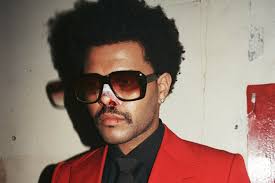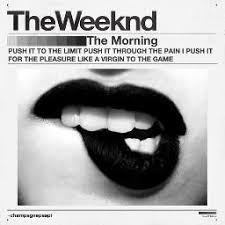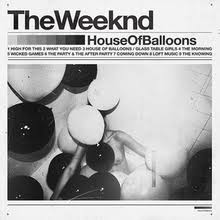 Home
History
Tour
Home
History
Tour

Tesfaye’s mother and grandmother immigrated in the 1980s to Canada from Ethiopia, and his first language was Amharic. When he was in grade 11, he quit school and left home, devoting himself to unbridled partying. Tesfaye eventually landed a job

at American Apparel and at the same time began writing songs about drug use, casual sex, and alienation. He crossed paths with musician and producer Jeremy Rose, and they started working together. Their collaboration yielded three atmospheric songs—“The Morning,” “Loft Music,” and “What You Need”—with lyrics that were partly sung and partly rapped. The songs, credited to The Weeknd, were uploaded as audio files to the video-sharing Web site YouTube in late 2010; their popularity grew exponentially after they were posted to the blog of Canadian rapper Drake. He is the son of Ethiopian immigrants but has had little contact with his father, who left the family when the Weeknd was only a toddler. His early musical influences ranged from traditional Ethiopian music to the "King of Pop," Michael Jackson. In an interview with Vanity Fair, the Weeknd specifically cited the impact of Jackson’s 1979 hit "Don’t Stop ‘til You Get Enough," describing it as "the song that helped me find my voice. It’s the reason I sing.”
On March 21st 2011, Tesfaye released the nine-track mixtape House of Balloons for free through his website. It featured production by Illangelo and Doc McKinney, although it did not credit Rose for his tracks. House of Balloons was met with critical acclaim, and was named as one of ten shortlisted nominees for the 2011 Polaris Music Prize. In July, Tesfaye embarked

on a tour and delivered his first performance at the Mod Club in Toronto with Drake looking on from a balcony. The hour-and-a-half long performance created buzz about him. His next performance took place at Toronto’s Molson Canadian Amphitheatre. He collaborated extensively with Drake, lending his vocals to several standout tracks on Drake's Multi-Platinum Take Care album and appeared as one of the special guests to Drake's second Annual OVO Fest on 31 July 2011. During the summer, the press noted that The Weeknd refused to participate in interviews and chose to only communicate via Twitter. His second mixtape Thursday was released on 18 August 2011, as a free digital download from The Weeknd's website, and was well received by critics. The Weeknd's third mixtape, titled Echoes of Silence, was released on 21 December 2011. Upon this release, the three 2011 mixtapes were collectively known as the Balloons Trilogy, each receiving critical acclaim and growing Tesfaye's fanbase.
The Weeknd subsequently asked his record company for help in crafting songs. The outcome was a professional relationship with the hit-making Swedish producer Max Martin and a duet with pop star Ariana Grande, “Love Me Harder.” The song, released in 2014, reached the top 10. The Weeknd’s next three hit singles, “Earned It,” “The Hills,” and “Can’t Feel My Face,” were featured on Beauty Behind the Madness (2015). In 2016 The Weeknd won Canada’s Juno Award for artist of the year for the second consecutive year, as well as four other Junos, including album of the year. He also won Grammy Awards for best R&B performance for “Earned It,” and Beauty Behind the Madness took the award for best urban contemporary album. In addition, “Earned It,” which was included on the soundtrack of the film Fifty Shades of Grey (2015), was nominated for an Academy Award in 2016. The Weeknd’s success continued with Starboy (2016), which featured high-profile collaborations with Kendrick Lamar, Lana Del Rey, and Daft Punk. The album was a commercial juggernaut, debuting at number one on the Billboard 200 and spawning hit singles like "Starboy" and "I Feel It Coming." Its sleek production and catchy melodies resonated with fans and critics alike, ultimately earning a Grammy for Best Urban Contemporary Album. Building on this momentum, The Weeknd released My Dear Melancholy, (2018), which marked a return to the dark, brooding tones of his earlier work. The stripped-down production and emotionally raw lyrics showcased his vulnerability, with tracks like "Call Out My Name" offering a haunting glimpse into heartbreak and personal turmoil.
The Weeknd's latest album, Hurry Up Tomorrow (2025), serves as the final chapter in a deeply introspective trilogy that began with After Hours (2020) and Dawn FM (2022). This trilogy has chronicled a journey through fame, excess, regret, and ultimately, self-discovery. After Hours plunged listeners into the neon-lit chaos of indulgence and heartbreak, while Dawn FM presented a purgatorial reflection on past sins, narrated as if from a radio station between life and death. Now, Hurry Up Tomorrow closes the narrative with an urgent reckoning—an acceptance of consequence and the pursuit of something beyond self-destruction. The album, featuring collaborations with Travis Scott, Playboi Carti, and Future, merges The Weeknd’s signature blend of synth-heavy R&B, pop, and hip-hop, pushing his sonic experimentation further. More significantly, this release marks the end of The Weeknd as a persona, with Abel Tesfaye signaling his departure from the stage name that defined his career. This transformation highlights the trilogy’s overarching theme: an artist stripping away the masks of fame and persona to reveal his true self, both musically and personally.